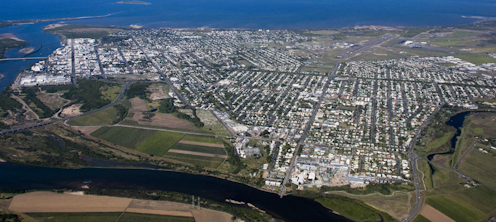Regional towns are at risk of being wiped out by the move to net-zero. Here's their best chance for survival
- Written by Esther Suckling, Research Associate, Grattan Institute

Australia’s mining and heavy industry sectors are on the cusp of a revolution as the world shifts to net-zero. Demand for traditional industrial commodities – coal, oil, and gas – is set to slide.
The International Energy Agency believes global coal use will have to fall 90%[1] if the world is to achieve net zero emissions by 2050.
That will hit hard Australia’s two main coal mining regions: Mackay and surrounds in Queensland, and the Hunter Valley in NSW.
Coal mines in Queensland’s Mackay region and the NSW Hunter Valley
But the end of coal need not mean the end of Singleton, Mackay, Muswellbrook, and the Isaac area. It means those places need a plan.
In planning for the difficult transition, they can learn from the experience of the Latrobe Valley in Gippsland, Victoria.
Latrobe shows what can work
After the shock early closure of the Hazelwood coal-fired power station in 2017, the Victorian government established the Latrobe Valley Authority[3] to help transform its industrial base.
The authority got to work on a range of initiatives.
Its “worker transition service” provided peer-to-peer advice on skills, personal finances, and job-seeking.
Its “worker transfer scheme” helped people who wanted to stay in the industry to move to other power stations elsewhere. And it offered financial support for retraining.
Read more: NSW's biggest coal mine to close in 2030. Now what about the workers?[4]
The authority also administered an “economic growth zone”, in which new businesses creating jobs for ex-Hazelwood workers received payroll tax deductions and exemptions from fees and charges for property purchases.
Five years on, unemployment in the Latrobe Valley sits at the same level as before the Hazelwood closure, and the region is exploring options to diversify into offshore wind generation.
Latrobe example shows how such transitions can work. But what works for one region might not work for another. Each has its own strengths and weaknesses.
Top-down doesn’t cut it
As an example, Singleton in NSW scores in the top 10% of regions on research and development[5], a measure that includes the number of engineers and scientists and the number of annual patent applications.
By contrast, the Isaac region in Queensland is in the middle of the pack.
Road and rail are in better shape in Muswellbrook in NSW than in the Central Highlands in Queensland.







